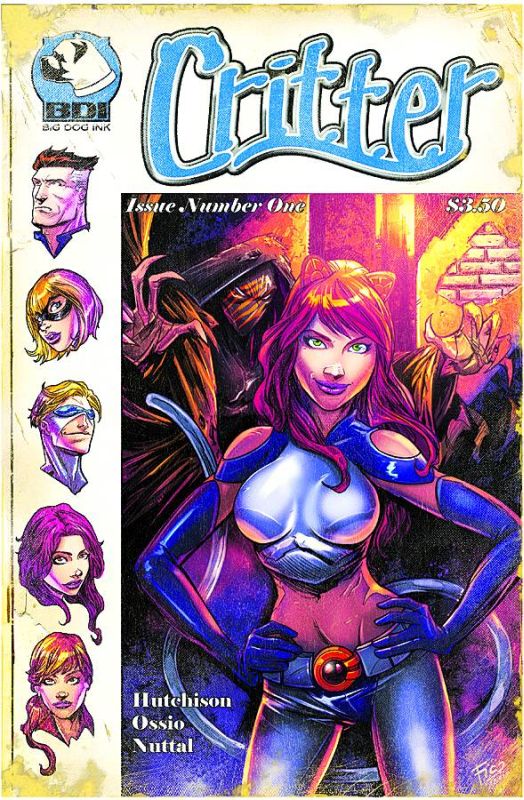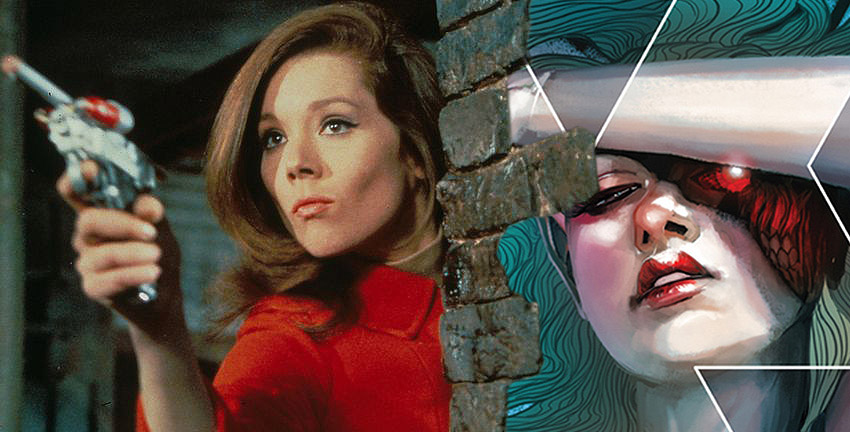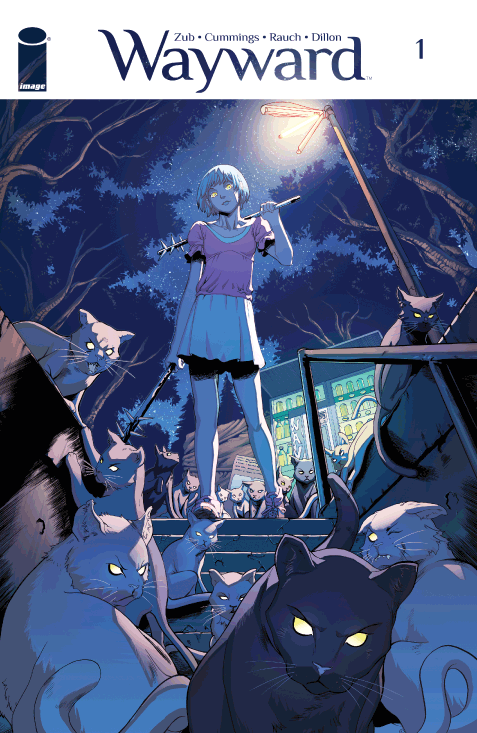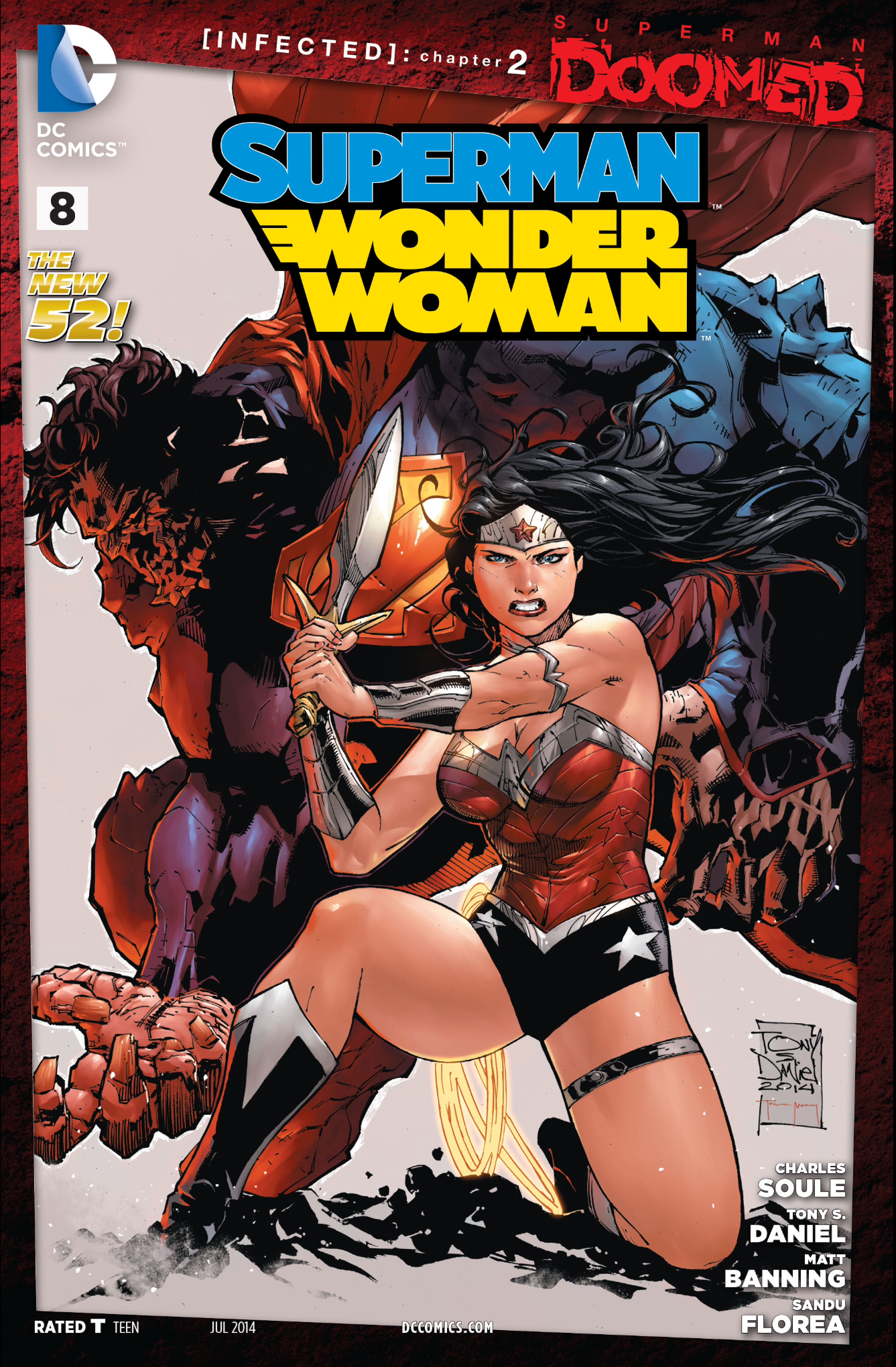At Wizard World Portland, I got to talk comics with a lot of great people. One of those people was Tom Hutchinson of Big Dog Ink. Tom is the author of the four major Big Dog Ink titles (Ursa Minor, Penny For Your Soul, Critter, Legend of Oz) as well as one of the people who started up the company. I had the chance to sit down and talk to him while I was there.
Talking Comics: Let’s start off with Ursa Minor, one of the horror titles that you’re currently working on. For those who are unfamiliar with the book or haven’t had a chance to read it yet, what is the book about?
Tom Hutchinson (Big Dog Ink): Ursa Minor is old school horror; Vampires, werewolves, claws, fangs. No sparkle, no angst, just the stuff that I grew up with. I grew up with the Hammer horror stuff of the 70s and the Freddy and Jason type of stuff in the 80s. Our story takes place in the now of 2013 with the inauguration. Werewolves show up and assassinate the President Elect on national television which sends the United States into a period of time similar to the Salem witch trials. Pure paranoia, who’s a werewolf, who’s not. As the werewolf hunt goes on across the country, the vampires decide they’re in trouble because they’re probably going to be caught up in this so they decide to out themselves voluntarily and offer to take care of the werewolf problem for the humans in return for basically living among the humans and not being hunted themselves. The United States agrees to that, the vampires essentially eradicate the entire species of the lycanthropes, (werewolves, weredeer, wererats) to the point where the humans say “We don’t want to be responsible for the extinction of another species so no more killing and every existing lycanthrope on the planet is now tagged (they have a little tag on their ears).” That gets the book kicked off.
The main story follows Naomi who is the last werebear and this story is her quest to get revenge against every vampire on the planet. So it gets a little epic as we go along.
TC: How do you manage to balance out the horror elements (the really creepy, spooky stuff) while still being able to move the story along and create an engaging story?
Tom: I’ve been a horror fan basically longer than I probably should be a horror fan. I was watching stuff like Friday the 13th and things like that when I really had no business. I’ve been a student of horror, at least in the film version, and so that was basically my template. Trying to figure out how to lighten the mood so that when you turn the page you are able to give them that gasp, that “Oh my God what just happened.” I learned that from cinema.
TC: You take a lot examples from your experience with horror films. Any particular films that inspired a lot of your writing, especially with Ursa Minor and/or your other books?
Tom: My favorite horror film that isn’t a character based horror movie (Freddy/Jason) was The Howling. Loved The Howling when I was a kid, I watched that endlessly. That really got my whole werewolf thing going. But really I watch horror across the board. Whether it’s the stuff like The Howling, Michael Meyer’s Halloween or even modern stuff like The Human Centipede, I love the creepiness of it. When something goes totally outside the box, that kind of stuff becomes inspirational. You can do anything with it in movies or in comics. That’s part of what I love about writing Ursa Minor is it’s very cathartic. I write a lot of stuff that’s all-ages like my superhero book Critter and The Legend of Oz, but when I just need to tap into that dark side a little bit, to dive into that world, I can really do anything that I want and that’s a lot of fun.
TC: From reading Ursa Minor I’ve also noticed that it’s not just werewolves and vampires. There are all sorts of mythical creatures involved. Why did you decide to incorporate not just the big two but also the other creatures?
Tom: There’s too many stories out there that are just the vampires versus the werewolves, it’s really too easy. What I wanted to do was expose the supernatural world and bring it into this story so that we could really have an amazing playground. I really tried to think about how all these species would connect. For example one of the elements in this book we have is fairies. Vampires use fairy dust as essentially cocaine for them. That’s sort of how we like to tie things together. Everything has a reason for being there and it all links together, one way or another. It helps broaden the world and make it rich. The more types of things you can put into a book, the more interesting it becomes.
TC: One last question on Ursa Minor. Why a werebear? Why is a werebear the one thing that can take down a vampire?
Tom: The concept of a werebear is badass. That’s really what it comes down to. The way I came up with the bear concept was from the term “Ursa Minor.” For some reason I heard the term “Ursa Minor” and in my brain the creative wheels started spinning. It started off as a little bear and then graduated into a girl wearing a bear costume which morphed into her being a werebear. I just thought that was awesome and when people come to the shows and see the book and I tell them “werebear,” their jaws hit the floor. It’s like the coolest thing they ever heard.
 TC: You also have another dark/occult book with Penny for Your Soul. Tell us a little about that book.
TC: You also have another dark/occult book with Penny for Your Soul. Tell us a little about that book.
Tom: Penny for Your Soul is about a demon who decides she wants to get in on the end of days battle between heaven and hell. So she sets herself up in Las Vegas and offers to buy her patron souls for $10,000. Of course heaven and hell start taking notice of the missing souls and so they come looking. It’s a very dark humor Vertigo-style book.
TC: How’d that idea come about, especially the title?
Tom: Honestly I have no idea. I wanted to do a book that poked fun at organized religion and things like that. I have no problem with religion in general but when it gets over-the-top, it really goes over-the-top. That was the original purpose of the concept behind it, but it’s really grown into something that I’m really proud of. It’s really based on the book of Revelations and the whole seven signs of the Apocalypse. In the first book we introduced the Horseman War, in the second volume it had the false prophet and so on. It was a small concept that grew into something really large, cool and intricate and has become one of our bestselling books.
TC: How does Joan of Arc tie into that?
Tom: In the original volume of PFYS, there is a hotel called The Eternity. There is also an Eternity in France. That’s where Joan comes from. Joan is transferred from Eternity France over to the one in Las Vegas. When she gets to Las Vegas she finds out that Mary Magdalene is in hell and she’s not really happy about that. So she puts together a little team that includes Cupid and they go down into hell to rescue her. That’s what we’re doing in our Joan of Arc miniseries right now.
TC: You also have two other comics in your main four lineup. Tell us a little about them.
Tom: Critter is our superhero book. It’s really old-school superhero, the kind of stuff that I grew up with. Nowadays everything is too hyper-realistic and too now. Why do I need now in my fantasy? I want my fantasy to be fantasy. The story is about a country girl who gets recruited by a team on the West Coast. When she moves out to California she finds out that being a real superhero is a lot harder than it was back home. So instead of pulling kittens out of trees and trackers out of mud she’s fighting the real bad guys, but she’s not always winning. What we did is went back to grassroots and put the learning curve of becoming a superhero back into the story. Nowadays everybody is a superhero and going about their business, so we went back to grassroots with that one and it’s been really, really fun. We did a miniseries last year and it’s now a monthly ongoing series with the first eight issues already out.
Our final book is The Legend of Oz: The Wicked West. It’s a western re-imagining of The Wizard of Oz so instead of ruby slippers, Dorothy wears ruby spurs, has ruby bullets and Toto is her horse. It’s got all the fantasy stuff that everybody knows like flying monkeys, the haunted forest and the witches, but the environment of Oz is grounded in a West-styled world. It’s been a tremendous, tremendous book for us.
TC: You also have some upcoming books in the works. Tell us a little bit about them as well.
Tom: We’re going to be having three or four new titles come out this year. The first will be Serusis, our first truly all-ages book. It’s a very sort-of Pixar type of book. At the same time we’re going to be having one of our superhero expansion titles called The In Crowd. These are characters that were introduced in the Critter miniseries and now they’re going to have their own miniseries this summer which will coincide with our big High Tide superhero event. We’re bringing back a book called Rex: Zombie Killer which is being called “The Walking Dead meets Homeward Bound,” the animal equivalent of the zombie apocalypse. And we’ve got a couple other books coming out in the summer and the fall as well as the return of some of our series like Penny For Your Soul.
 TC: One thing I’ve noticed is that you’re the writer on all four of the major Big Dog Ink titles. How hard is it balancing all the titles and doing everything successfully?
TC: One thing I’ve noticed is that you’re the writer on all four of the major Big Dog Ink titles. How hard is it balancing all the titles and doing everything successfully?
Tom: Writing the four books, because they’re so different from each other, actually makes it easier. If they were all horror titles and I was constantly every day in the horror genre, my head would probably explode. But if I’m writing Ursa Minor and I’m just not feeling it or I decide I want to write something a little lighter that day, I’ll jump into Critter and write that. If I feel like writing some gunfights, I’ll jump into Oz. So writing the four books that are so different from each other really makes it easier.
TC: With a lot of your titles, art plays a major part of it. Especially with Ursa Minor, which relies heavily on visual cues, how important is it as the writer collaborating with the artist and coming up with ideas with them?
Tom: It’s everything. Comics are a visual medium so when somebody comes to a show or they pick up a comic book off the shelves, they’re not reading the book they’re flipping through it and they’re looking at the art. So the art is really 90% of the book. The story is what brings them back, but the art is what will grab them.
When we started this company, it was our intention to have books and art that would stand up against any and everything in the industry. Marvel, DC, Image, Dark Horse, whatever, we have to be able to put our books next to them and have them stand up. I think we’ve done that. The other thing we like to do is have consistency with the artwork. We don’t want one guy doing two issues and a fill-in for one issue and then another guy come in for three issues. All of our books to date have been consistent art, the regular artist does the artwork the whole way through. The exceptions have been Oz and Critter, with each fifth issue being a fill-in issue, but those are done on purpose so the main artist can keep doing the things that he does so we can keep the book on pace. Even the fill-in issues though, we want to make sure the quality level does not dip down so we go out and find guys who can really do this, even if it’s just for one issue.
TC: One last question. Are you at all surprised by the popularity of the comics and that they’ve been as successful as they’ve been?
Tom: I don’t know if it’s surprise but the trick is that when you put out a new book into the marketplace, especially when you’re not attached to a company like you would be with Image or something, you’re really just diving into the deep end and don’t know what’s going to happen. So I don’t know if surprise is the word I’m looking for, but happy is the word I’d use. People have really taken to what we’re doing here across the board, whether it’s superheroes or horror, people are loving what we do, and it’s one of the best feelings I could ever imagine.














